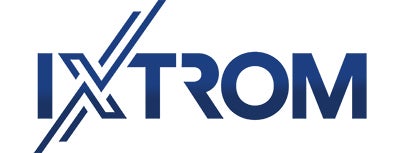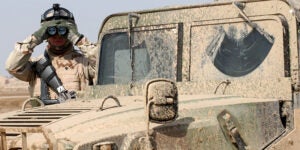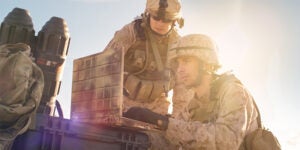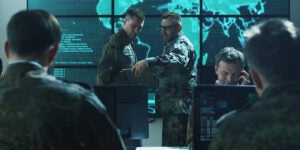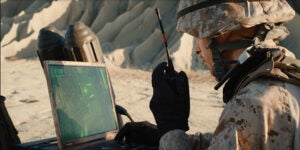Evolving Battlespace Triggers Innovations in Military Training

Despite the cost savings associated with simulated training environments, current solutions are time-consuming to prepare and cumbersome to modify.
The global shift to full-spectrum warfare and in-and-out mission fighting have given rise to an evolution in training requirements and methodologies. Previous training technologies were helpful in many ways, including cost savings on operational equipment, but were limited in scope and time-consuming to prepare. Innovative developers have now taken the simulation option to the next level. Digitally-simulated training environments can enhance a soldier’s real-time decision-making abilities and improve the likelihood of mission success when confronted by an unconventional enemy, and that was the aim of previous generation technologies.
Significant cost-savings are also achieved through these training systems and is a major reason why they have been widely implemented. The evolution of large scale digital training exercises developed quite rapidly once it became feasible to exercise without the huge expense of sending brigades or divisions into the field. Soon, digital exercises were set up to improve responses and efficiencies for all aspects relating to the warfighting effort. Exercise Unified Resolve was initiated in 2012 and has become an annual computer-assisted exercise designed to test command and control capabilities within the Canadian Army.
Speaking about Unified Resolve back in 2016, Brigadier-General Trevor Cadieu noted the criticality of simulation exercises for the leadership of the brigade. “It allows us to stress test some of our planning and procedures without needing to pull 4,000 troops into the field, away from their families and other duties,” said then-Commander of 1 Canadian Mechanized Brigade Group. With continued implementation across multiple domains in recent years, the benefits and advantages of simulated training are now considered irrefutable.
Over time, however, significant drawbacks of those technologies were identified. The various processes to create and modify an exercise are often time-consuming, require a variety of formats, and the data for assessing outcomes is not available right away. In the case of Unified Resolve, the overall scenario for the exercise is written, coordinated, and rehearsed well in advance, with the relevant Battle Task Standards that need to be achieved by the Primary Training Audience. Daily meetings help to coordinate the exercise and, if required, new or modified scenarios can be injected at that time. An on-site writing team then implements modifications in order to achieve the training required.
The Future of Training
A multinational force has many moving pieces that have the potential to disrupt planning and efficiencies. The complexities of logistic support is a prime example, particularly in a multi-national context. As one soldier noted, it can be as simple as knowing the different fuels required for Canadian and American armoured vehicles. Discovering the limitations of existing technical infrastructure is another critical aspect when international forces are working together and operating with independent information systems that require unique regulatory solutions. Developing training simulations that mirror the realities of counter insurgency operations is also a complex process. For example, although it was highly successful, and involved more than 1,200 military, ex-military and civilian personnel to execute, Unified Resolve 2018 required almost a year of planning and 2 weeks to set up. These drawbacks were the inspiration for a completely disruptive new process.
IXTROM Group, a leader in situational awareness and information management systems, recognised the need for a faster and more intuitive technological approach to the planning and execution of simulated training environments and the impact of real-time feedback on learning potential. The company, headquartered in Magog, Quebec, was also identified by the Gartner Group a year ago as a top ten crisis / emergency management platform.
IXTROM Group CEO Soledad R Bourque said: “One problem with traditional systems is the lack of interoperability for multiple nations, organisations and agencies. Also, the lack of traceability has been a concern for many. Whereas with IXVMS collaboration, communications and traceability is provided in real time within a secure environment.” She notes that, for technologies currently in use, “modifications are usually arduous to implement.” Depending on the complexity of the simulation scenario, she says the compilation of data for analysis, which is the whole purpose of the exercise, has been a cumbersome process in the past.
Next-generation systems are busting the status quo in a big way. Engineers have been able design systems that facilitate all mission types and operations (including joint and multinational), support tactical management, and correlate definitions, models, modification injects, goals and taxonomies, plus incorporate a full gamut of symbols, pictures and documents. Global positioning, Common Operating Picture (COP), action status of injects, and different methods of communication for the development of training and continuous execution flow are also key features in next-gen simulation training.
Other key requirements were ease-ofuse (intuitiveness and flexibility) and speed. Users can now easily create, manage, and optimise processes and procedures, deriving lessons learned and best practices through the analysis of every aspect of each event. The shift towards a whole-of-government approach to decision making means training simulations must also take into consideration the political and social repercussions of any given decision. For example, in Unified Resolve 2018, CAF Public Affairs personnel were tasked with responding appropriately to a fictional news story that an errant artillery round had hit a mosque.
The exercise simulated the resulting chatter on social media and forced personnel
to respond effectively in a high-pressure environment. In the real world, this event could shift public perception and affect future involvement in the region. Understanding the roles that support personnel play in the larger political landscape and involving them in detailed simulations is part of the reason why significant resources are invested in the initial design of complex exercises. This is also why evolving, next-generation solutions that streamline the planning phase will be
in high-demand.
Real-time Monitoring
“Effective real-time data management is a main factor for success,” asserts Bourque.
This is especially important for maximising learning potential and decision-making processes. In next-generation training solutions, actions must flow with ease while being monitored and traced. No longer a “wish list” ideal, post-exercise reports are now available immediately after the training session is over-capitalising on all interactions and deriving relevant lesson learned. The future, as they say, “is now,” and the Government of Canada recognises this, making every effort to assist in the implementation of such revolutionary technologies.

